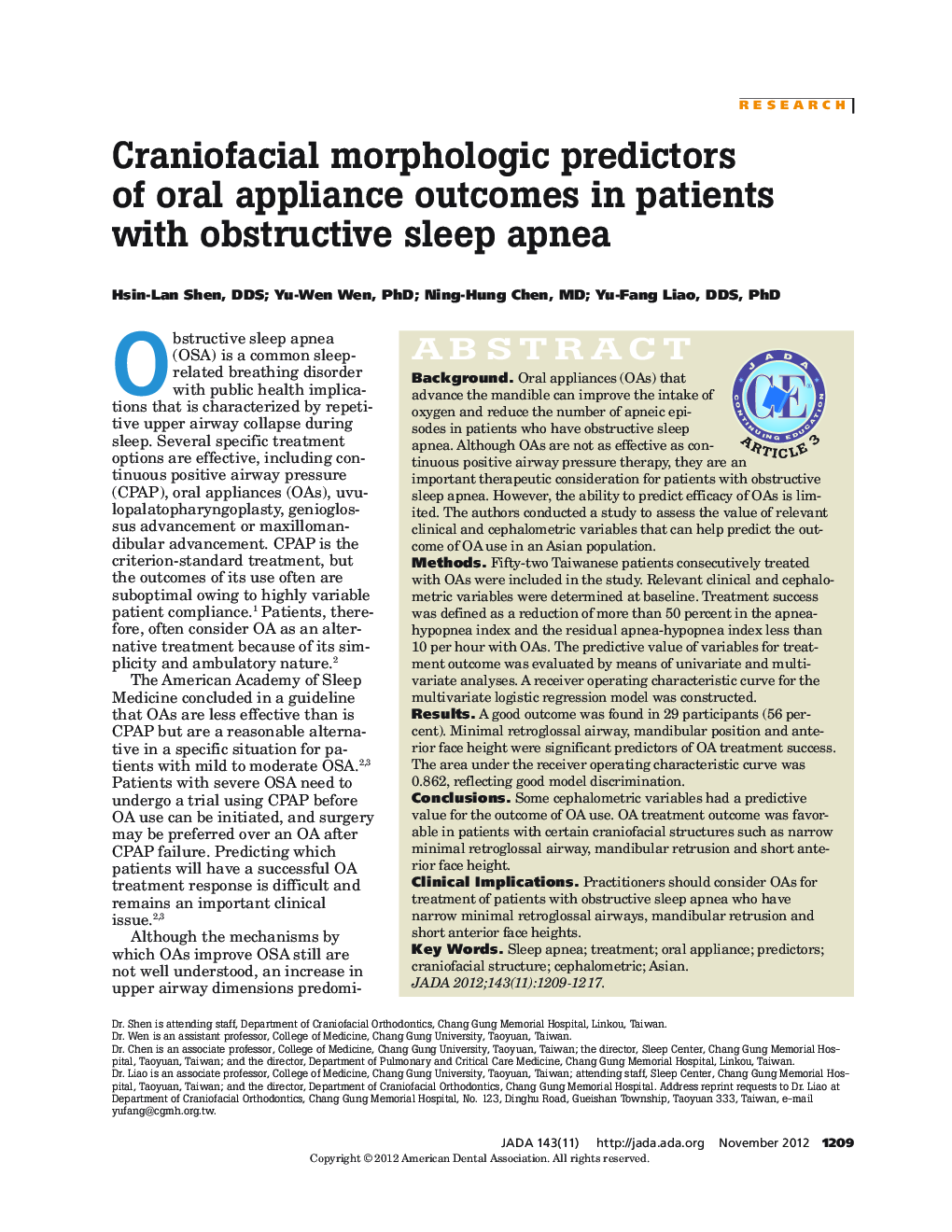| Article ID | Journal | Published Year | Pages | File Type |
|---|---|---|---|---|
| 3137844 | The Journal of the American Dental Association | 2012 | 9 Pages |
ABSTRACTBackgroundOral appliances (OAs) that advance the mandible can improve the intake of oxygen and reduce the number of apneic episodes in patients who have obstructive sleep apnea. Although OAs are not as effective as continuous positive airway pressure therapy, they are an important therapeutic consideration for patients with obstructive sleep apnea. However, the ability to predict efficacy of OAs is limited. The authors conducted a study to assess the value of relevant clinical and cephalometric variables that can help predict the outcome of OA use in an Asian population.MethodsFifty-two Taiwanese patients consecutively treated with OAs were included in the study. Relevant clinical and cephalometric variables were determined at baseline. Treatment success was defined as a reduction of more than 50 percent in the apnea-hypopnea index and the residual apnea-hypopnea index less than 10 per hour with OAs. The predictive value of variables for treatment outcome was evaluated by means of univariate and multivariate analyses. A receiver operating characteristic curve for the multivariate logistic regression model was constructed.ResultsA good outcome was found in 29 participants (56 percent). Minimal retroglossal airway, mandibular position and anterior face height were significant predictors of OA treatment success. The area under the receiver operating characteristic curve was 0.862, reflecting good model discrimination.ConclusionsSome cephalometric variables had a predictive value for the outcome of OA use. OA treatment outcome was favorable in patients with certain craniofacial structures such as narrow minimal retroglossal airway, mandibular retrusion and short anterior face height.Clinical ImplicationsPractitioners should consider OAs for treatment of patients with obstructive sleep apnea who have narrow minimal retroglossal airways, mandibular retrusion and short anterior face heights.
